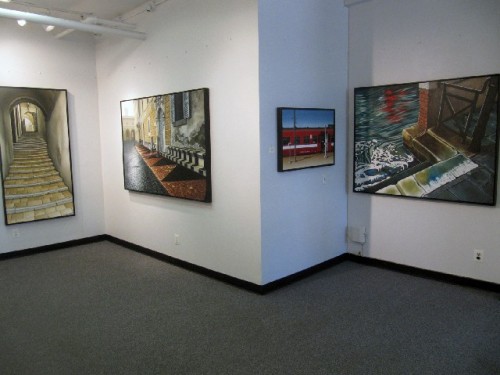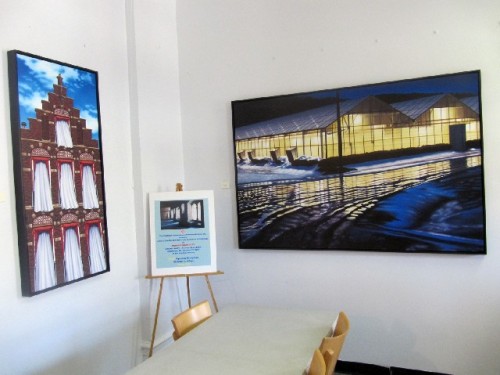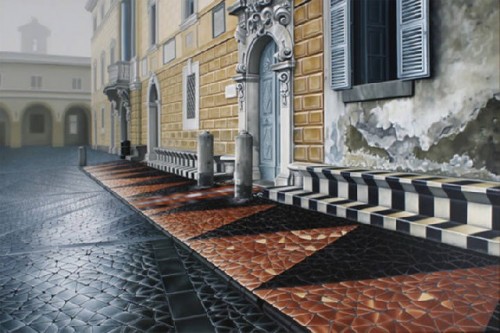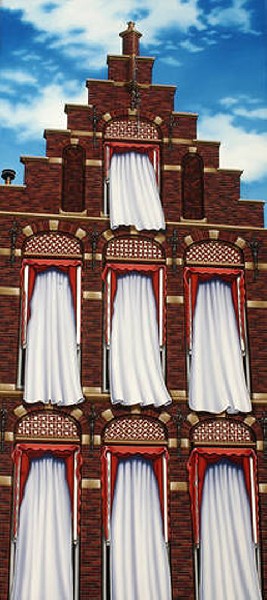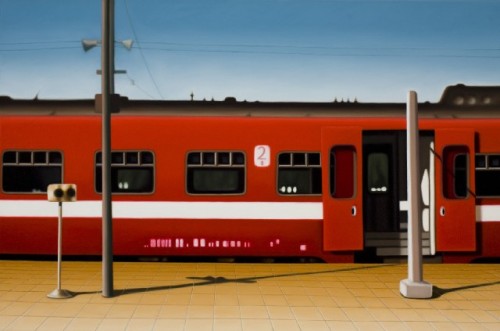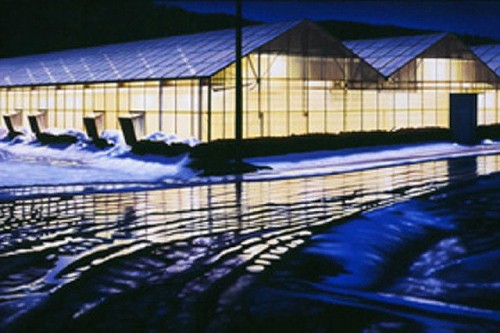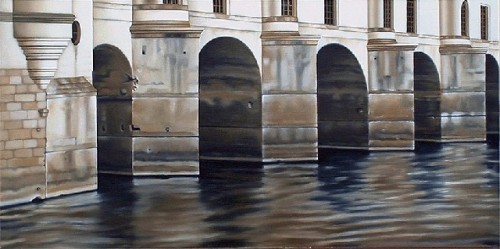Pennie Brantley at National Association of Women Artists
NY Exhibition on View Through October 27
By: Charles Giuliano - Oct 20, 2011
Pennie Brantley
Sacred Duty; Journey of an Artist
NAWA Gallery
80 Fifth Avenue, Suite 1405
NY, NY
212 675 1616
September 28 through October 6, 2011
Monday to Friday, 11am to 5 pm
On the way to the Chelsea galleries during a recent visit to New York we started cross town on 14th Street with a visit to the National Association of Women Artists to view an exhibition of realist paintings by Pennie Brantley.
We have followed her work over many years starting in Boston. There was a loss of contact while she and her artist husband, Robert Morgan, were living in Argentina. We reconnected in the Berkshires where they live just over the line in New York.
Bob and Pennie have been active participants in exhibitions and projects initiated at the Eclipse Mill Gallery in North Adams. A couple of summers ago they had an exhibition in the Eclipse Gallery which was popular with visitors and respected by the extensive North Adams community of artists.
She has been showing pretty much annually in group shows at NAWA and now has been accorded the prestige of a one woman show by that venerable and historic institution.
The National Association of Women Artists was founded in 1889 by five artists: Anita C. Ashley, Adele Frances Bedell, Elizabeth S. Cheever, Edith Mitchel Prellwitz and Grace Fitz-Randolph.
At that time they called it the Women’s Art Club. In 1913, they changed the name to the National Association of Women painters and Sculptors, and in 1941, they renamed the organization to the National Association of Women Artists, Inc. Many recognized women artists have been associated with N.A.W.A. including: Mary Cassatt, Gertrude Vanderbilt Whitney, Isabel Bishop, Anna Hyatt Huntington, Alice Neel, Louise Nevelson, Audrey Flack, Miriam Schapiro, Pat Adams, Faith Ringgold, and many others.
While off the track of a normal run of galleries it was delightful to find the space and take the elevator to the 14th floor. There we encountered a combined office and exhibition space. There were several women working on a variety of tasks as the organization has many activities and functions. A new member was chatting with the director about an evening slide presentation of her work.
We spoke with the executive director Susan G. Hammond who stated that the organization actively recruits women artists from all over the United States. An ad in Art New England has been particularly successful in attracting new members.
It was intriguing to learn of the long history of the organization. Certainly when it was founded in 1889 circumstances for women artists were quite different than today. Of course a lively question, perhaps for another time, is have they really changed all that much?
In a note from Pennie about my visit she apologized that most of the work on view I have seen before. It is more of a comment on the labor intensive challenge of her meticulously detailed paintings than a reflection on her work ethic.
Like some legend from folklore Brantley seems to delight in setting for herself seemingly impossible tasks. Not only to render the meticulous details of an Italian cityscape but then to diminish them in proper perspective and perhaps another conundrum such as the element of fog or shift in time of day and light.
The resulting images are crisp, absorbing and evocative.
Because Pennie and Bob are passionate travelers that becomes a key element in the work. There is a distinctly Italian Renaissance bias in the images from Venice to Orvieto. But they are never the typical or obvious views. From the many photographic images they cull Brantley edits them down to the few that are quirky and unique enough to be painted. They are challenging and evocative with narratives layered over by exotic elements of time and experience.
In that sense, perhaps, American vistas have not yet reached that redolent peak of time and mystery. Of course the answer to that question evokes, A Wilder Image, as Asher B. Durand reminded Thomas Cole then about to embark for a tour of Europe’s romantic ruins. The paradigm was the American sublime with our phenomenal landscape and natural wonders.
Perhaps one day Brantley will settle at home and start to depict the changing seasons and vistas of the Berkshires.
Until then we will continue to delight in these ever so slowly evolving capsules of time and place. They are clearly deeply personal meditations that are reflected on through months of studio time.
The intrigue of realism is that an artist can stay focused for extended periods of time bringing to fruition something seen in an instant. It is like capturing lightning and keeping it in an aesthetic bottle.
That never ceases to amaze me when I encounter Brantley’s gorgeous paintings. How I envy those who get to live with them.


